What are the best sweeteners for the keto diet? Check out this comprehensive guide to baking with sugar substitutes, and learn how to get the taste and texture you crave!
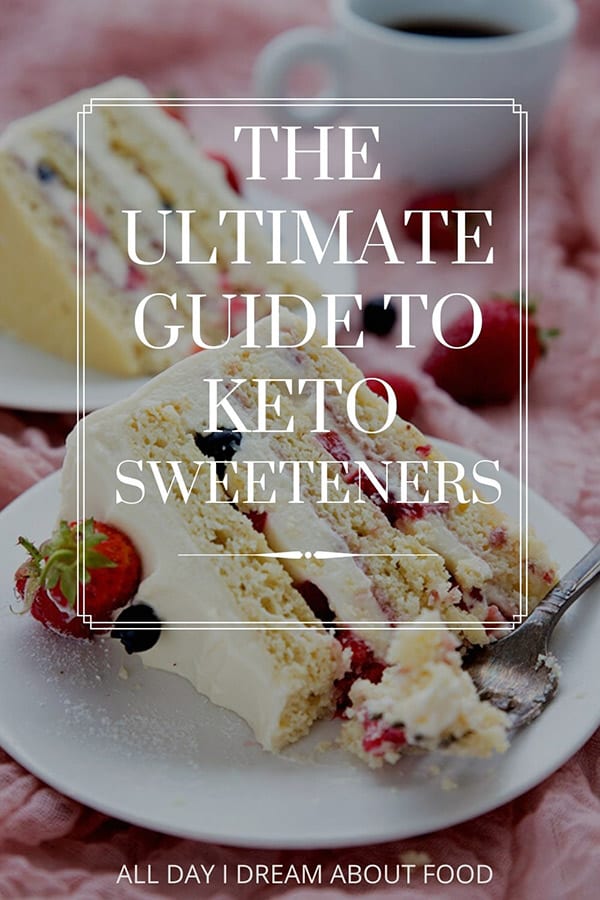
Today, my keto friends, I am imparting some of my vital knowledge and deep wisdom about using keto sweeteners. We will discuss all of their pros and cons, and how they affect the outcome of your keto desserts.
In advance of the holiday baking season, I figured you could put this information to good use. Because if you’re anything like me, you like to get an early jump on your keto holiday cookies!
This is actually an abridged version of the in-depth keto sweetener section in my book, The Ultimate Guide to Keto Baking. I think you will find it very informative.

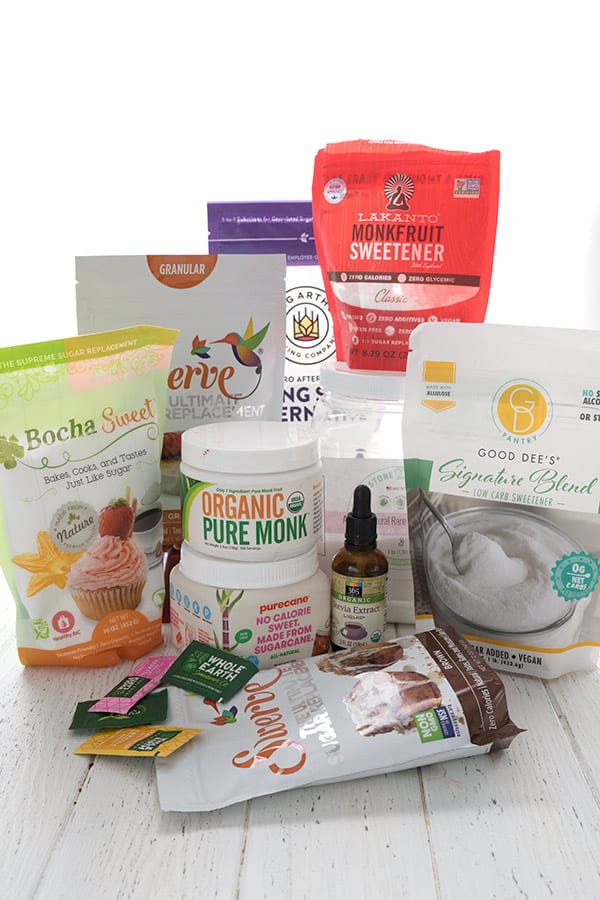
What is the best keto sweetener?
I’m sorry, I simply cannot answer that for you.
I’m not being willful or stubborn, or deliberately withholding information. It’s simply that there is no such thing. Yes, you read that right – there is no such thing as the best keto sweetener.
Here’s why: Everyone experiences these sugar substitutes differently. It’s almost as individual as the individual themselves.
- Some people experience an unpleasant aftertaste with one and not another.
- Some people suffer from GI issues or headaches when consuming certain sweeteners.
- Some people see a blood sugar rise when other people do not.
- Some people may even experience an allergic reaction to certain sweeteners.
With the sugar substitutes market constantly expanding and changing, it’s much more about finding what sweeteners work best FOR YOU.
What are the best sweeteners for keto baking?
Ah, now we’re on to something. This is my territory and one that I have researched extensively. I have experimented with a wide array of sugar substitutes and I can tell you straight up that none of them behaves exactly like sugar.
They all have very different properties and the sweetener(s) you choose will impact the outcome of your recipes. The trick is to understand their different attributes and use them to advantage.
Consider the final product before choosing your sugar substitutes. What are you trying to make? What consistency are you trying to achieve? Do you want it crisp or soft? Chewy or cakey? Should it be gooey or firm?
Most of the popular brands on the market are actually blends of two or more keto sweeteners. For simplicity’s sake, I am going to break them down into their main ingredients.
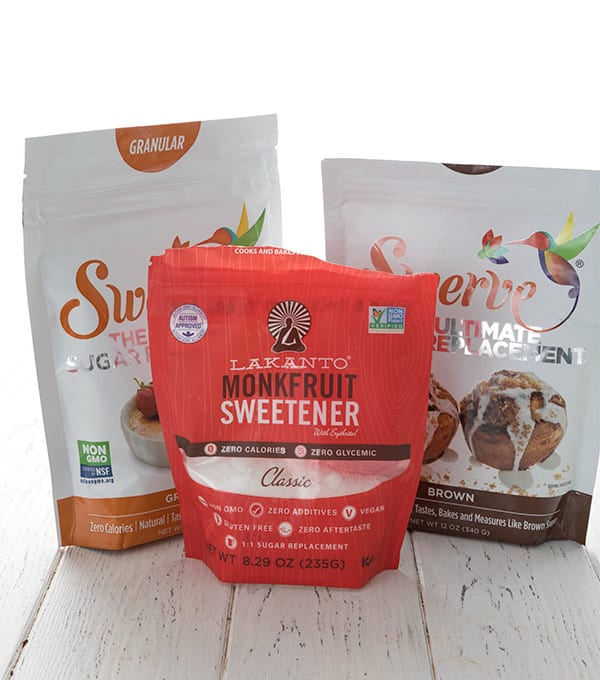
Erythritol
What is it?
Erythritol is a sugar alcohol (polyol) that is naturally present in some fruits and fermented foods. For mass production, it is made by fermenting a glucose syrup with enzymes.
It is unique among sugar alcohols in that it has zero carb impact. Our bodies simply do not recognize it as a carb so it does not impact blood sugar at all. And unlike many sugar alcohols, it does not cause gastrointestinal issues for most people.
How does it work?
Similar to sugar:
– Erythritol mimics sugar in its crystalline structure, so it helps whip air into butter and egg whites.
– It also browns and crisps up nicely and it can even be coaxed into caramelizing.
Differs from sugar:
– It’s only 70% as sweet as sugar, which is why most brands combine it with other sweeteners, to make it measure cup for cup.
– It’s non-hygroscopic, meaning that unlike sugar, it does not attract or hold onto moisture, which can cause baked goods to be dry and crumbly if they don’t have enough fat.
– It can re-crystallize as it cools, particularly in liquid applications like sauces, custards, and ice cream.
– Some people experience a mouth-cooling sensation, similar to sucking on a mint. Not everyone experiences this, and often mixing it with other sweeteners eliminates this sensation.
Major Brand Names: Swerve, Lakanto (this is mostly erythritol… do not be fooled by the fact that it calls itself a “monk fruit sweetener”), So Nourished, ZSweet.
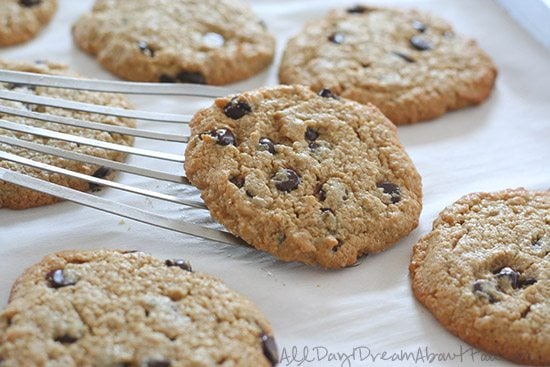
Xylitol
What is it?
Xylitol is also a sugar alcohol found in some fruits and vegetables, as well as in wood and corn. It is usually manufactured commercially from corn or birch trees.
Some, but not all, xylitol is absorbed by the intestines into the bloodstream. This means it can cause some gastrointestinal discomfort when consumed in large amounts. It can also have an impact on blood sugar.
WARNING! The biggest issue with xylitol is that it is highly toxic to dogs.
How does it work?
Similar to sugar:
– It has a crystalline structure so it can whip air bubbles into butter and egg whites. It’s also as sweet as sugar.
– It’s more hygroscopic than erythritol so it attracts moisture and it doesn’t re-crystallize as it cools. Xylitol is great for ice creams and sauces to keep them soft.
Differs from sugar:
– Xylitol doesn’t caramelize or crisp up very well. This can cause problems for baked goods that need a crisp texture, like many keto cookies. They will turn out much more cakey and soft if you use xylitol.
– Definitely do NOT use for meringue, as it will stay gooey and soft, and won’t come off the parchment paper.
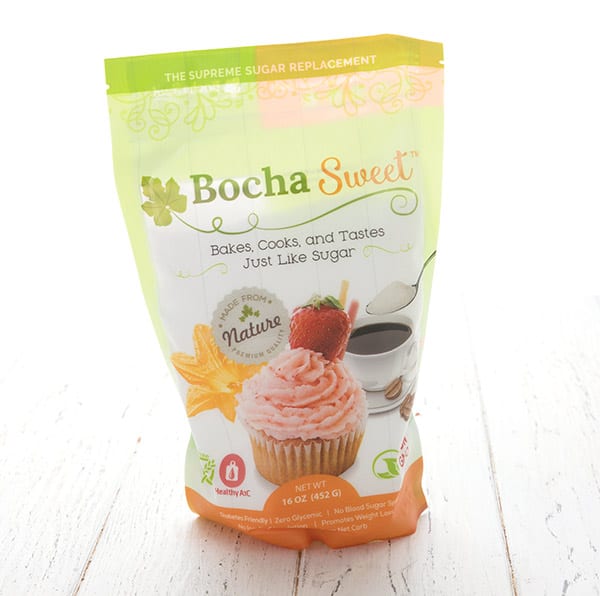
BochaSweet
What is it?
BochaSweet is the brand name of a unique sweetener derived from the kabocha squash, a type of winter squash also know as Japanese pumpkin.
Like erythritol, it seems to have little to no impact on most people’s blood sugar. But like xylitol, it can cause some gastrointestinal upset when consumed in large quantities.
In many ways, BochaSweet functions a lot like xylitol (they are both pentose sweeteners), but it does not appear to be toxic to household pets.
How does it work?
Similar to sugar:
– BochaSweet is as sweet as sugar and so can be used as a cup-for-cup replacement, without an apparent aftertaste.
– It is more hygroscopic and doesn’t re-crystallize so it’s great in sauces, custards, and ice creams. (I have started using it in combination with Swerve in all of my keto ice cream… they stay scoopable even straight from the freezer!).
Differs from sugar:
– Just like xylitol, BochaSweet will not crisp up or brown very well. Cookies end up soft and cakey, and meringues are so gooey that they won’t come off the paper.
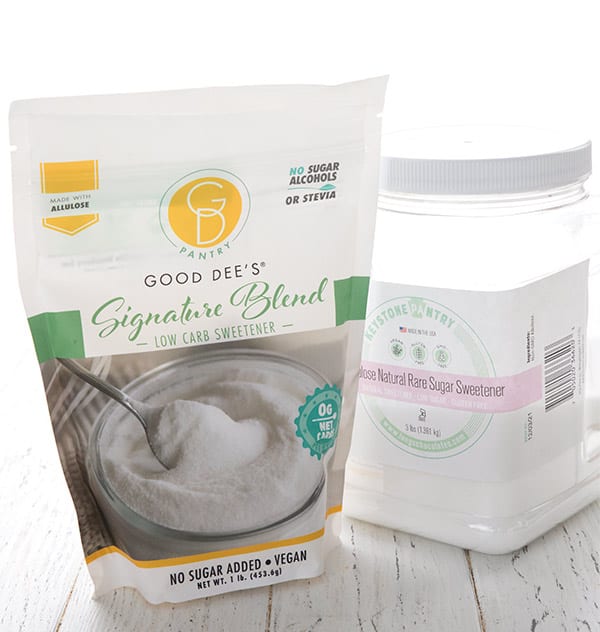
Allulose
What is it?
Allulose is a relative newcomer on the sugar alternative scene and has become incredibly popular. It is a monosaccharide, which means it really is a “sugar”, but one that our bodies don’t treat like a sugar or a carb. It is largely excreted without ever affecting blood glucose levels.
However, I caution you from personal experience that large amounts can cause serious GI distress. Many people don’t seem to suffer from this, but some of us do and it’s…not fun.
So it’s worth testing on yourself in small amounts and building up from there.
How does it work?
Similar to sugar:
– Allulose caramelizes nicely and tends to be hygroscopic, keeping sauces and ice creams soft, and baked goods tender.
Differs from sugar:
– Allulose is only 70% as sweet, which means you need more to sweeten your desserts.
– While it caramelizes well, it doesn’t crisp up well and baked goods tend to be soft and cakey. Even just a little allulose, in combination with other sweeteners, can prevent your cookies from becoming crisp.
– It can over-brown the outside of baked goods, especially the parts that are touching the sides of the pan. Cakes can have a dark, almost burnt appearance, although they aren’t over-cooked.
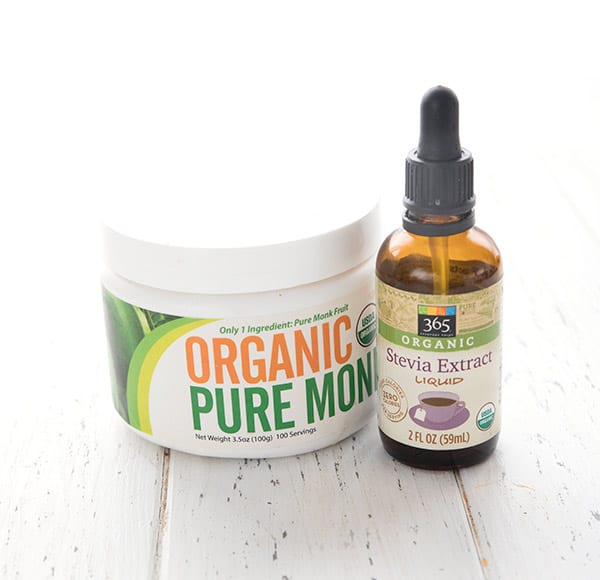
Stevia and Monk Fruit
I am lumping these two together because they have many similar properties and behave much the same way.
What are they?
Both stevia and monkfruit are naturally derived, plant-based sweeteners that are hundreds of times sweeter than sugar. Because they are extremely concentrated, a tiny amount can sweeten a whole recipe.
While that may sound like a good thing, it can have major implications for your keto baked goods. Read on…
How do they work?
Concentrated sweeteners like these have no “bulk” – they have little in the way of weight or volume so they don’t add much to your recipe other than sweetness. They can’t contribute anything to texture or consistency, and they don’t caramelize, crisp, or brown your baked goods.
Bulk is an important factor in anything from cupcakes to frosting. Substituting a non-bulk sweetener means your keto treats may not rise properly, may be more fragile, and may not set properly.
“Monk fruit sweetener”
Please be aware that many brands that bill themselves as “monk fruit sweetener” are actually mostly erythritol. The main ingredient is erythritol, with a little monk fruit to make it sweeter. This means that the sweetener will behave mostly like erythritol.
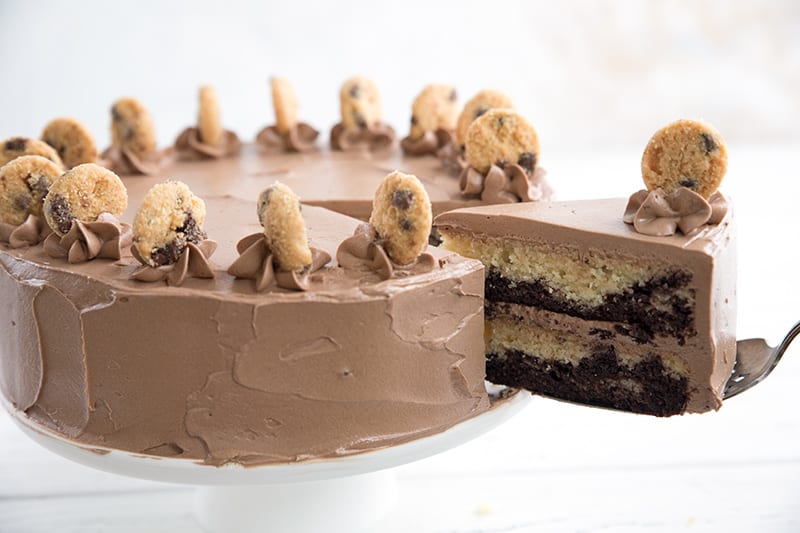
How to use sugar substitutes
I’ve thrown a ton of information at you and I know it’s hard to digest it all. I do this for a living and still I have times when a certain sweetener doesn’t behave the way I think it should. But here’s a quick cheat sheet on what to use when:
Want crisp keto cookies? Use erythritol based sweeteners like Swerve, Lakanto, or So Nourished. Other options will make your cookies soft and cakey. I highly recommend Swerve Brown for the best brown sugar substitute for cookies!
Making a keto cake recipe? Use any sweetener that has bulk (erythritol, BochaSweet, xylitol or allulose), but do be forewarned that some are not quite as sweet as sugar and you may need more of them.
Making a keto frosting? You need a bulk powdered sweetener to give your frosting structure. Erythritol, xylitol, and BochaSweet all have confectioners (powdered) versions. Allulose may as well but I am unsure of brands.
Want a gooey consistency? Try using BochaSweet or allulose, or combine it with another erythritol based sweetener. This combo is perfect for things like keto caramel sauce or my keto pecan pie.
Want keto ice cream that stays scoopable for days? My recommendation is half Swerve and half BochaSweet or allulose. Using only erythritol based sweeteners makes your ice cream rock hard, and all BochaSweet makes it too soft (it stays like soft serve!).
Just trying to sweeten your coffee? Use whatever you like best. They all work well if you don’t need a certain consistency so this is a matter of personal preference.
Still have questions?
Leave a comment and I will do my best to answer!
Adding to the confusion is that many brands on the market are blends of the keto sweeteners I outlined above. Blending sugar substitutes can maximize their sweetness and reduce potential aftertastes.
But I’ve tried such a wide array of sweeteners, I have a good idea of how most of them work. I can also take an educated guess based on the ingredients list. So drop me a line and I will give you all the information I can.

Free Bonus: Secrets to Keto Baking!
Sign up for your favorite recipes delivered straight to your inbox plus get our FREE bonus: Secrets to Keto Baking!


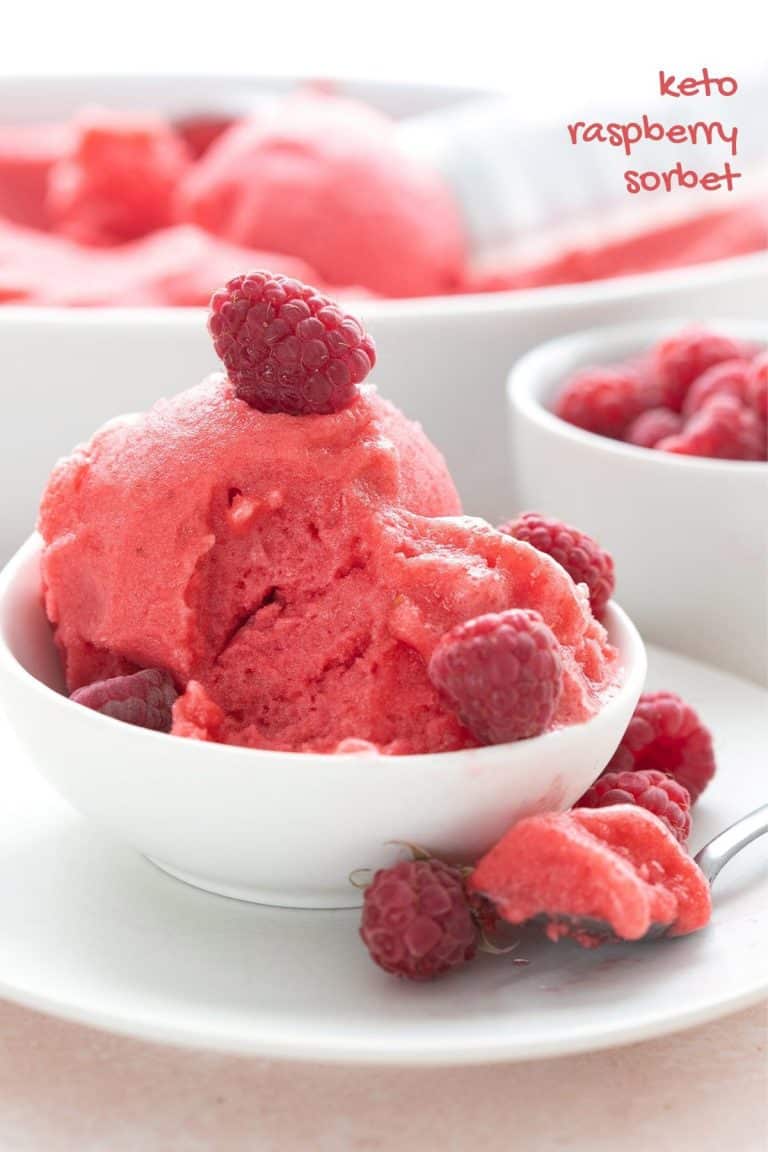

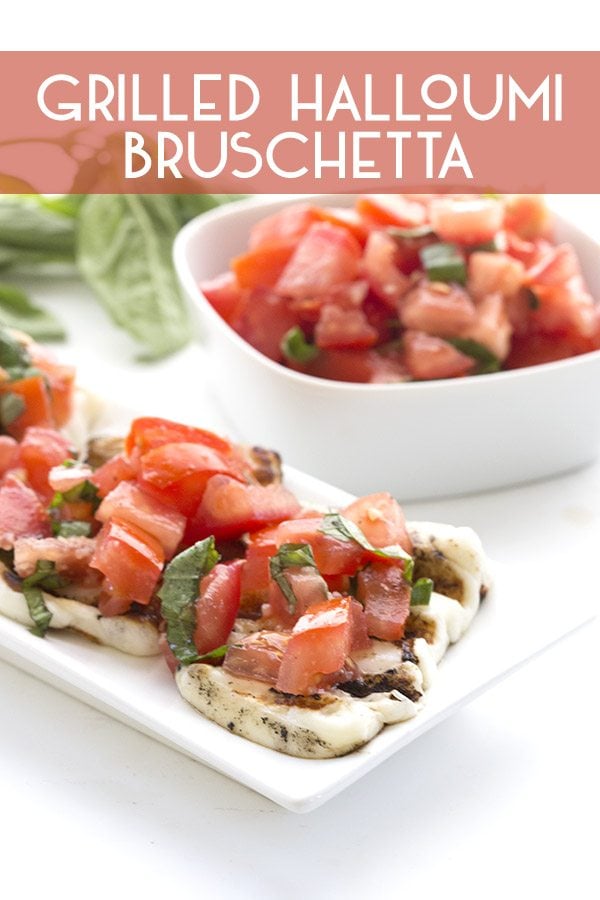










Good day thank you for all your wonderful recipies.
I am staying in a country that does not have the following:
Bocha sweet
Swerve Brown
Swerve Powder
Where can I find your substitutes for this?
I have no idea, to be frank. I have no idea where you are and what is available there.
my GI tract does not like sugar alchols – stevia is OK, and there’s date sugar and brown rice syrup – can you comment on these ? I’m interested in brownies, bars, and cookies . Thanks ! your website is so wonderful for me in my new search for gluten free and sugar free sweets? Lilys is great, need to try Chocolove.
Date sugar and brown rice syrup are *not* keto-friendly.
Thank you for this guide! I seem to be having an allergic reaction when I eat allulose- almost immediately I break out in itchy hives on my chest. I love how it works in baked goods but it does not love me back. I’ll have to experiment with some others to see what I can tolerate. This guide is incredibly extensive and helpful!
Oh, that’s not fun! Try BochaSweet for recipes that need a little added gooeyness.
I made a mistake when making my ice cream. I did all granular swerve instead of half bocasweet. Is there a remedy for gritty texture??
Not at this point, unfortunately.
I’ve never used Swerve, and noticed you specify the brown version. Why is that? And what does the allulose add to the recipe? Thanks so much.
Oops. I was referring to the ingredients in your Mongolian beef recipe.
Because Mongolian beef takes brown sugar. I talk about what the sweeteners do in the blog post.
What is the best sweetener for brownies?
Well… that depends on what texture you want. If you like them cakey, use allulose. If you like them more firm, use Swerve. If you want to do a mix, that’s fine too.
What do you think about All Purpose In The Raw?
I had to look it up… it’s hard to see the ingredient list but looks like it’s allulose, erythritol, and monk fruit. Which means it’s hard to say how it will behave, when it’s a mix of sweeteners that have very different properties. But I will tell you that even the smallest amount of allulose will keep cookies from crisping up properly.
Which sweetener do you recommend for jams. The Clubhouse gelling agent that I use for uncooked freezer jam didn’t seem like the Swerve granular and left little white dots in my jam.
You need one of the ones I mentioned that don’t re-crystallize.
Thank you, very informational and helpful.
I have an iced tea fetish. I actually drink about a gallon a day. At the present time, I’m using “Crystal Light Sweet Tea,” and I am addicted to it. I’d rather brew my own decaffeinated tea and add fresh lemon and a better sweetener than what’s in the tea I’m drinking. For cold drinks, what can I use. I could add the sweetener to the hot tea first, then refrigerate also. But I’m still confused as to what will give me that sweet flavor without grit and similar taste. “Crystal light Sweet Tea” contains the ingredients as listed in the following order: “Maltodexrein, Citric Acid, Instant Tea, Corn Syrup Solids, Aspertame, Contains less than 2% of Sucralose, Acesufame, Potassium, Magnesium Oxide, Red 40, Yellow5, Blue1”
***Please help me to get rid of the Aspartame and Corn Syrup!***
This recipe might help: https://alldayidreamaboutfood.com/keto-sweet-tea/
Hi, I hope this isn’t an impossible question… I want to try one of your muffin recipes but it asks for Swerve. I can’t get swerve where I live and in any case Stevia liquid is the most tolerable sweetener option for me. From this post I have learned that I may need to add something to provide structure, if I substitute a few drops of stevia for swerve. Are you able to suggest what I could try for that role, please? Thank you!
Most keto muffin recipes have enough structure from the flours. They aren’t as dependent on sweeteners for consistency. I say try it with what you have and see how it goes. At most, you may need to add a bit more flour. Can you get protein powder at all? That will help a lot.
Hi Carolyn, I know it’s new, but wondering if you have tried the new brown sugar Bocha Sweet. I’m thinking it would be similar to the white granular with regard to keeping ice cream soft or cookies not being crisp. Since you are always ahead of the curve, thought you may have some inside info 🙂 Thank you so very much for all you do.
I haven’t tried it but the ingredients are basically erythritol (with some Bocha extract?) and monk fruit. Which means it may be more like regular erythritol… I am just not entirely sure if the Bocha addition will soften things to much).
Thank you very much for sharing. I found this article so helpful because I was confused about all the different sweeteners. I love to cook and bake and you are my go-to person for keto-based recipes. I’m never disappointed. Thank you.
So glad it helped!
Have you tried Anthony’s brand Erythritol? I am in British Columbia and noticed that on Amazon it is cheaper than some other brands….. $20.99 for 2.5 lbs (1.13kg) I have been using Swerve but would like to get something in a larger bag.
Thank you for the summary!! The only problem is that I have digestion problems with erythritol, so not quite sure how to get crisp cookies … . My solution to avoiding any of the digestion problems (and aftertaste) has been to mix allulose, erythritol, xylitol, stevia and monk fruit. So that explains why I can’t make crispy / crunchy cookies! But I guess it’s better that I can eat them without digestive issues.
Thanks again!
I wish i had read this before figured out about half of it by trial and error. It will still be helpful. Unfortunately, it seems the very property that helps ice cream to stay scoopbable is what causes the gi distress. I guess im doomed to choosing between blood sugar spikes or gi distress or eating only very small amounts of ice cream.
Before you make that assumption… give it a try in a ratio of half Swerve, half allulose or Bochasweet. At first, allulose gave me some tummy troubles (and still does if it’s the only sweetener). But 50:50, it doesn’t bother me at all!
Try adding some vodka to your ice-cream to help with the softness.
Is allulose a good replacement for xylitol in an erithrytol/xylitol/stevia blend? I have a dog and I’m not comfortable keeping xylitol around.
It depends. It tends to make things softer so it could affect the outcome of your recipes. But I’d say it’s worth a shot for the safety of your pets!
Carolyn, as a newbie to keto baking, I don’t have a big stash of ingredients, so I mostly use Lakanto and have found it to be an acceptable alternative to sugar in many cases. But, if it’s used in larger quantities, like a topping, it seems to have a sharpness or harshness that I really don’t care for. Do you think combining the Lakanto, (which I know is already a combination of erythritol and monk fruit), with yet another sweetener might mellow that harshness? B/t/w, yours are, by far, the best-tasting, most consistently dependable keto-type recipes I have found anywhere. Thank you!
For most people, a mix of sweeteners helps mitigate any aftertaste or afteraffect… but you also need to understand how it will change your results in baking, as I outlined in this article. Hope that helps!
WOW thank you so much for this article!
Now I understand what went wrong: why my matcha cookies are so lame this time around – I used pure xylitol instead of the usual 40/60 xylitol erythritol.
This is great information – thanks again!
Will try one of your recipes
Glad it helped!
What sugar substitute is better for cheesecake
Just look at any one of my cheesecake recipes! 🙂